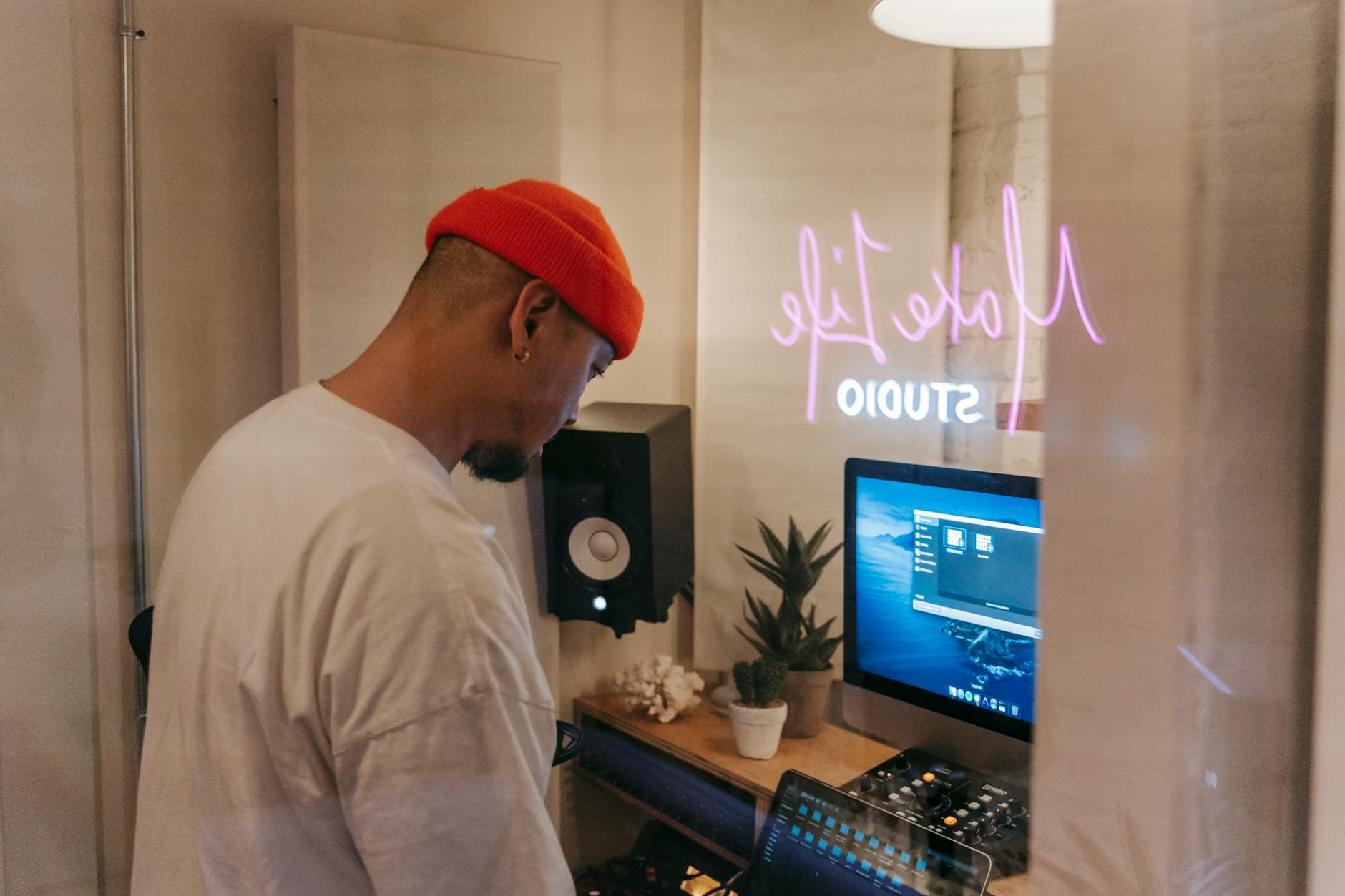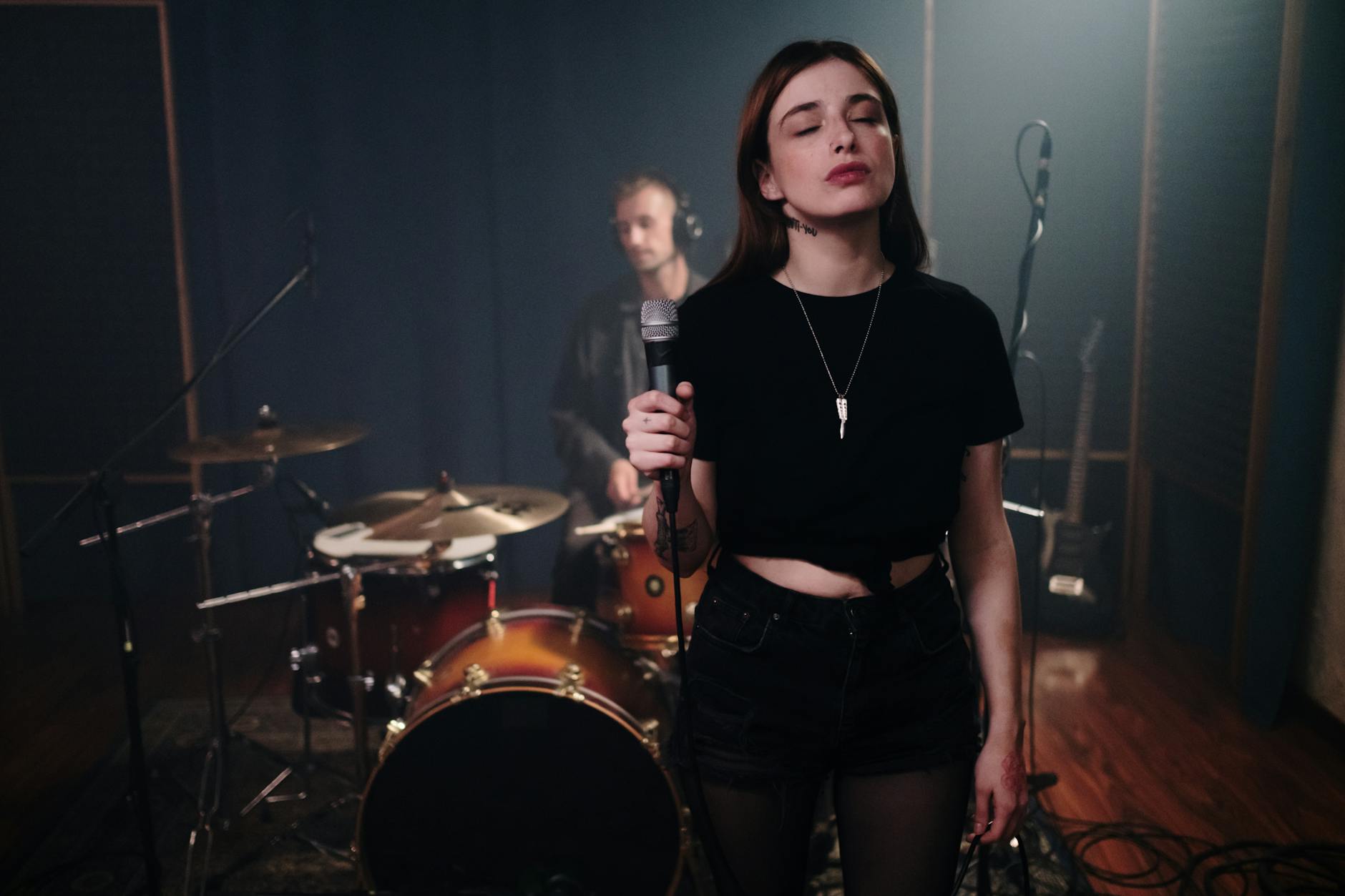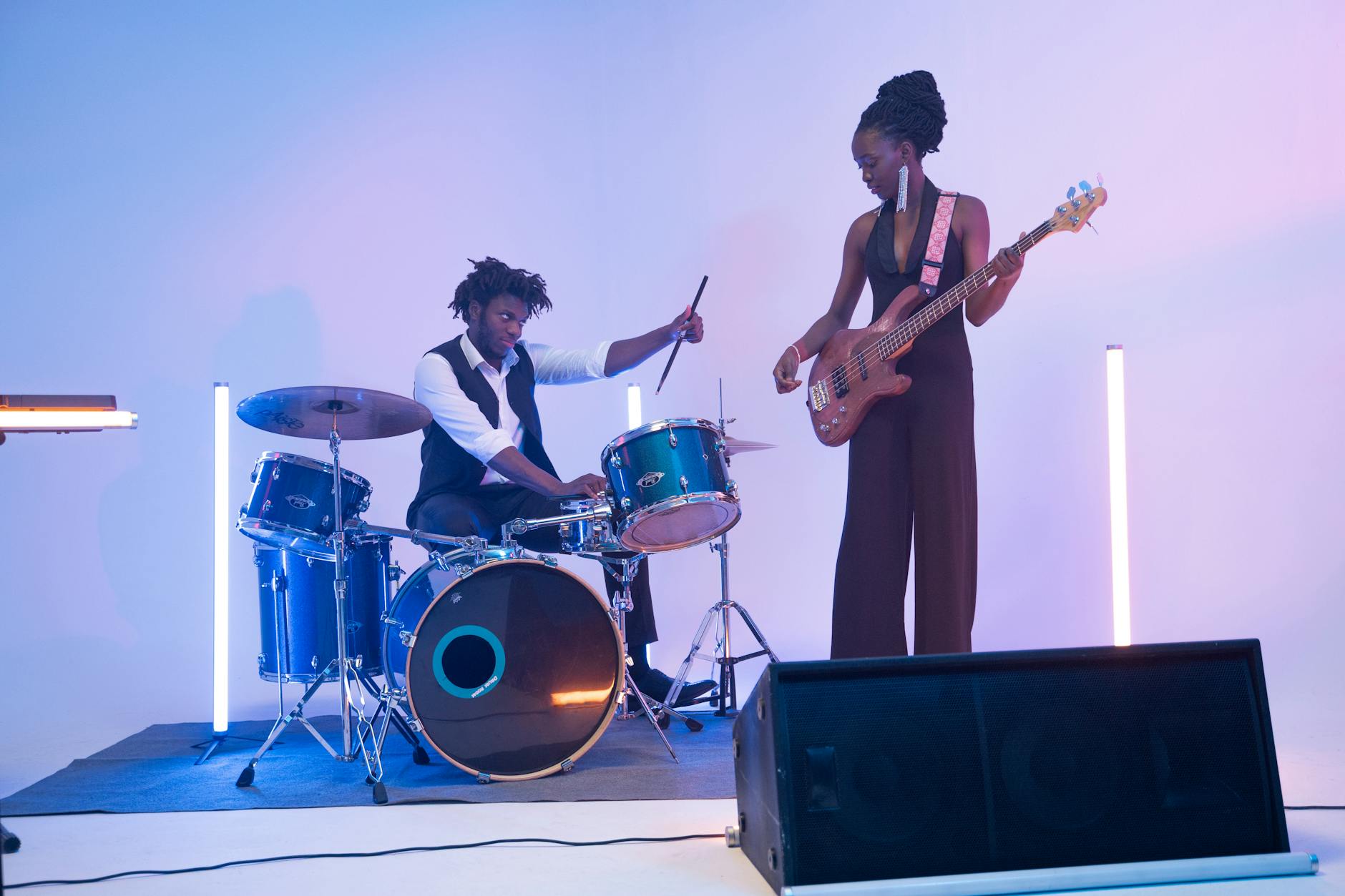Electric vs Microphone Recording for Guitar: Which Works Best?
Discover record guitar electric vs mic pros and cons. Learn which recording method gives the best sound for your home studio. Find your perfect tone now!

Ever wondered why that killer guitar tone collapses when it hits the recording? It happens to nearly everyone. Choosing how to record—whether plugging in electric (DI) or miking up an amp—can make or break a track. Here's the truth: each method changes not just your sound, but how you mix, tweak, and finish your song. With so many guitarists stuck at home studios now, this choice matters more than ever. What's the real difference? And which method shapes up best for your space, workflow, and genre? This guide gives a side-by-side, real-world comparison of electric (DI) vs microphone recording for guitar, mixing expert tips and wisdom from players who've tried it all—so you'll finally know how to capture your sound right.
What You'll Learn:
- The difference between direct (DI) and mic’d amp recording explained simply
- Key tonal and technical tradeoffs of each recording method
- Step-by-step setup for home studios: DI and microphone
- Expert tips to blend DI and mic for pro results
- When hybrid (DI + mic) tracking outperforms either method alone
- Decision process to match recording style to your music and gear
How Electric (DI) and Microphone Recording for Guitar Work
Recording electric guitar demands a basic choice right from the start: plug in direct via a DI (direct input) or stick a microphone in front of the amp. Each path shapes tone, workflow, and editing options. Both methods are common in home setups—and each has diehard fans.
What Is Direct (DI) Guitar Recording?
Plugging your electric guitar into an audio interface or dedicated DI box is called direct recording. The signal goes straight from your instrument into your digital audio workstation—no amp or speaker in between. Most budget interfaces offer a hi-Z instrument input for this job. Some players opt for external DI boxes for improved tone and impedance matching, especially when clarity is top priority. DI recording captures pure string and pickup tone with almost surgical accuracy, letting you reamp, edit, or process after the fact. The trick is: use a high‑quality DI and keep the record level between –12 to –10 dBFS for clean, uncolored sound.
- Pure guitar signal, uncolored by amps or rooms
- Maximum editing and reamping flexibility
- Requires correct impedance for full frequency response
- No natural ‘air’ or speaker coloration recorded
How Microphone Recording Captures Your Amp’s Tone
Miking a guitar amp is classic for a reason. The amp, the cab, the room, and the mic choice all interact to produce that punch players chase. A simple dynamic like the SM57 earns its reputation for biting upper mids, while a Sennheiser MD421 adds a richer low end. Ribbon mics lend smoothness, and condensers catch every nuance. Room size, mic position (on/off axis, distance), and what’s between the amp and mic change everything. A close mic grabs punch and presence. Throw in a room mic a few feet back? The recording comes alive. Miking adds the noise, vibe, and unpredictability that many miss with direct recording alone.
- Captures amp, speaker, and acoustic space in one shot
- Tone shaped by mic type, placement, and the room
- Requires interface with quality preamps
- Ambient noise and room sound become part of the recording
Signal Flow and What Gets Captured
Here’s the split. A DI track records clean signal straight from guitar. That means every edit is possible, but it misses the character the amp, speaker, and space add. A mic'd track starts at the amp’s speaker—any tone changes from amp settings, pedals, mic choice, and room blending right into the audio. Want both strengths? Run through a DI box with a thru jack to the amp, letting you capture both signals simultaneously. It’s the pro secret: full flexibility in editing and mixing, but with that amp ‘feel’ right up front.
Now that the basics are in place, let’s see how each method shapes tone in real projects.
Tonal and Technical Differences: Electric Input vs Mic’d Amp
Every recording decision shapes the mix. DI and amp miking sound—and feel—completely different in finished songs. To get pro tracks at home, understanding how each method colors your guitar, and what tech pitfalls can kill the vibe, is everything.
Tonal Impact: Warmth, Clarity, and Room Sound
Direct recording nails transient attack and pure note definition. Sprinkle in high frequencies and it shines for pop, funk, or metal rhythm where clarity matters most. Miking an amp, on the other hand, brings added warmth, midrange complexity, and subtle room reflections players crave. The choice of mic is key. That classic SM57 pushes the guitar forward in the mix; an MD421 fills it out. Ribbon types—like a Royer R-121—tame harshness, producing vintage blues and jazz tones. Genre matters too. Mic’d recordings naturally blend into rock and blues tracks. DIs deliver a pristine base for amp simulation and modern tones.
- DI recording: tight transients, neutral tone, full flexibility
- Mic’d amp: organic warmth, harmonic complexity, ambient “air”
Technical Considerations: Gear, Gain Staging, and Impedance
Gear choices can make or break a session. Using a dedicated DI box (like a Radial JDI) ensures proper impedance, avoiding the thin, ice-pick sound of a bad direct recording. Hi-Z instrument inputs on modern interfaces (such as Apollo Twin or Focusrite Scarlett) work for many setups, but not all. On the mic side, preamp quality and gain staging are critical. Set preamp input so the peaks hit –10 to –6 dBFS, avoiding digital clipping. Match mic type to sound goal: dynamic for grit, ribbon for smoothness, condenser for detail. Always check phantom power if using condensers. Impedance matching, correct mic distance (start at 3–6 inches), and low-noise cables round out the toolkit.
- Use DI box or hi-Z input for pure DI signal
- Select right mic (SM57, MD421, ribbon) for desired tone
- Gain-stage carefully to avoid unwanted noise or clipping
- Test placement: Start close, move out for more room
Common Mistakes and How to Avoid Them
Many home recordings fall flat because of rookie errors. Plugging into a low-impedance line input? The result is thin, lifeless tone. Putting the mic off-axis by mistake? That scoops mids and weakens punch. And there’s nothing like phase issues when blending tracks—instant hollow sound. To sidestep these, always:
- Match DI box to guitar impedance for best capture
- Avoid placing mics too close to speaker edge—start center, move slowly outward
- Check phase and waveforms when layering DI and mic
- Record both clean and processed signals for backup
Understanding these tonal and technical tradeoffs sets up the true head-to-head: which method actually delivers in real workflows?
Pros and Cons: Direct Guitar Recording vs Miking an Amp
So which method actually works best? Here’s a clear look at strengths, weaknesses, and how real players and engineers use both in home and pro studios. Pros rarely pick just one—they blend to get mix-ready guitars.
Direct Input (DI): Advantages and Limitations
Going direct lets you capture the cleanest possible signal, perfect for editing, re-amping, and endless tone shaping. There's no amp noise or room oddities to deal with. For players focused on flexibility, late-night tracking, or editing-heavy genres, DI is a no-brainer. But some feel it lacks “feel” and real-world bite, especially without the right amp sims or IRs. The struggle: sterile tone or “plastic” mids when running straight into the interface. Fixes? Use amp simulation, add IRs, or blend real amp/mic tracks for more body.
- Easy to edit and process post-recording
- Feedback-free, noise-free takes anytime
- Enables reamping—try new tones after tracking
- Can sound flat or artificial without extra effort
Miking an Amp: Strengths and Weaknesses
Miking up brings instant realism and “amp in a room” vibe. Every detail—from speaker and cab to room reflections—hits the mic naturally. Classic tones in rock, blues, and jazz rely on this. But recording live amps isn’t always practical. Small apartments, cranky neighbors, or basic gear can trip things up. Mics pick up everything: background noise, room flaws, even traffic. Adjusting mic angles or swapping a dynamic for a ribbon can breathe life into a part. But the setup requires patience—and practice. Get it wrong, and phase or room issues sneak into the track.
- Delivers ‘real’ tone and natural dynamic feel
- Amp settings, pedal order, and room all shape the sound
- Noise, mic placement, or small room can be tough to wrangle
Blending Both: The Hybrid Approach
Here's what works for a lot of players and pros: track both a DI and a mic’d amp at once. Route your guitar through a DI box, send one output to the amp for miking, the other straight to the interface. Each signal lives on its own DAW channel. After tracking, you can blend the DI's precision and attack with the body and air of the mic'd amp. There’s a catch—phase alignment. Waveform “nudging” or phase-flip buttons must be checked or tracks might hollow out. When synced, it’s the best of both worlds. Shootouts on forums reveal that blended tracks sit in mixes better, with transient bite and amp color—plus fallback options if mix plans change later.
- Record DI and mic tracks on separate channels
- Line up transients by eye or ear in DAW
- Use phase flip or nudge as needed
- Blend to taste: more DI for precision, more mic for warmth
Ready to put theory into practice? Real-world examples and key tips up next.
Pro Tips and Real-World Examples for Home Studios
Home studios demand smart workflow. Pro results come from technique, not just gear. Here’s how to nail DI, amp miking, and powerful blends in DIY rooms, with actionable steps at every stage.
Step-by-Step: Recording Guitar Direct (DI) at Home
Clean DI tracks require proper setup. Begin by plugging your guitar into a quality DI box or high-Z interface input. Set gain so that hard picking peaks around –10 dBFS. Turn off all effects—record bone dry! In the DAW, check noise floor and monitor latency. Add amp simulation or IRs later for the “amp” sound in the mix—never print processed tones at this stage. This gives full control for reamping, editing, or layering tracks down the line.
- Guitar → DI box or hi-Z input
- Set record levels: –12 to –10 dBFS
- Turn off ampsims/effects while tracking
- Monitor with plugins for feel, but record clean
Step-by-Step: Miking Your Amp Like a Pro
Mic choice and placement shape the entire take. For punch, put an SM57 one inch off the cone center. For fullness, angle an MD421 a few inches back. Adding a ribbon mic like a Royer R-121 on the edge blends bite and body. In small rooms, avoid pointing the mic straight at walls—angled or off-axis placement reduces comb filtering and weird reflections. Use at least two mic positions to find the tone that fits the track. Here are real-world moves:
- Start with SM57 on axis, 1–2 inches from grille
- Experiment with off-axis or edge placement for brighter vs. rounder tone
- Add a room mic 3–6 feet away for ambience—if space allows
- Record test riffs and adjust mic positions gradually
Blending and Mixing: Getting the Best of Both Worlds
To blend DI and mic, import both tracks into your DAW. Visually align the first transient—this often solves major phase problems. Play both at equal volume, then flip phase on the mic track if the sound hollows out. Fine-tune by nudging waveforms or using phase-adjusting plugins. A common blend is 60% mic, 40% DI for classic rock; add more DI for modern genres craving articulation. Trick: record a little room noise or amp buzz on a separate track to fill out soloed passages—top engineers swear by it!
Armed with these hands-on steps, the last piece is knowing which method actually fits your music, space, and goals.
Choosing the Right Method for Your Music and Workflow
No single approach fits every guitarist. The best choice depends on genre, gear, space, and how you work. Here’s how to match method to music—and sidestep common headaches at home.
Genre and Tone Goals: What Suits Your Sound?
Clean pop, indie, or funk? Direct guitar recording through a DI, paired with modern amp sims, nails clarity and snap. Heavy rock or blues? A mic’d tube amp (even at moderate levels) produces saturated mids and bloom that most plugins struggle to match. Jazz, ambient, or experimental genres thrive on hybrid tracks—DI for edits, mic for unique room flavor. The more you define the ‘end’ sound before recording, the smoother the process gets.
- Pop/funk: DI and amp sim—use 60–80% DI
- Classic/hard rock: Mic’d amp or blend—at least 60% mic signal
- Ambient/jazz: Hybrid or room-miked for authentic vibe
Space, Volume, and Practical Constraints
Recording in an apartment? DI means no angry neighbors—or late-night restrictions. Amp miking needs real space and isolation; thin walls or small rooms exaggerate flaws. If you want “amp in a room” with minimal volume, consider reactive load boxes with cab IRs—amp output → load box → interface with cab sim. For noisy rooms, use a close-miced dynamic or switch to DI. Budget tip: even entry-level DI boxes or interfaces beat 3.5mm adapters for signal integrity.
- Assess available space and volume needs
- Check for room noise and isolation options
- Pick gear that fits both budget and sonic goals
Quick Checklist: Making Your Choice (or Blending Both)
Still unsure? Here’s a rapid checklist:
- Genre favors clarity, editing, or reamping (pop/electronica): Start DI
- Classic amp vibe or live feel is must (rock/blues): Go mic or hybrid
- Recording at night, in small rooms, or on a budget: Start DI, supplement later
- Have the gear and patience? Hybrid DI+Mic is the safest bet
Whatever approach wins out, each decision gets easier with practice. Remember: experimenting with different methods—sometimes mid-project—is how most guitarists finally find their sound.
Frequently Asked Questions
Should I record guitar direct or mic an amp?
What are the pros and cons of DI vs mic’ing?
Can you record both DI and mic and blend later?
Is DI recording enough for a pro guitar sound?
What's the biggest mistake when recording guitar at home?
Both DI and mic’d amp recording transform your guitar tone—each with its own strengths. DI captures pristine clarity, tight transients, and editing freedom; miking brings warmth, mix presence, and sonic character that plugins struggle to match. Blending both signals, phase-aligned, often produces the fullest, most natural grooves for home and pro tracks. Whatever gear or space you have, try tracking both next session—then blend, tweak, and see what fits your mix best. That final polish? It rarely comes from just one method. Experiment, listen, and build your guitar tracks on what you actually hear coming out of the speakers. That’s the path to professional, signature sound at home.
Key Takeaways
- Both DI and mic recording methods have unique strengths—DI for clarity and control, mic for warmth and realism.
- Hybrid approaches deliver the richest, most flexible guitar tracks.
- Phase alignment and technical basics matter more than gear price.
- Experimenting with different methods unlocks personal tone in any space.
Related Topics
Explore more articles in these topics to deepen your knowledge.
Related Articles

Best Free DAWs for Guitarists in 2025 with Setup & Workflow Tips
Discover the best free DAWs for guitarists 2025. Compare features, get workflow tips, and find the perfect guitar-friendly DAW. Start recording better now!

Fender Studio App for Mobile Multitrack Guitar Recording (2025): The Ultimate Free Solution for Guitarists
Discover how the Fender Studio app guitar recording 2025 brings easy multitrack studio power to your phone. Start recording pro guitar tracks now!

Fender Studio App 2025: Free Multitrack Guitar Recording on Mobile and Desktop
Master the Fender Studio guitar recording app—unlock free multitrack recording on mobile or desktop. Capture ideas fast. Start creating now!
Discover more insights from our blog to enhance your musical journey.
